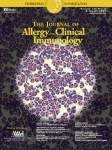Phase Three World Maps
In Phase Three ISAAC "mapped" the prevalence of asthma, rhinoconjunctivitis and eczema, conducted between 2000 and 2003.
Asthma
Further study of the global prevalence and severity of asthma symptoms was undertaken in ISAAC Phase Three, involving adolescents from 233 centres in 97 countries, and children from 144 centres in 61 countries [Lai 2009]. As in ISAAC Phase One, wide variations in prevalence were found around the world. The prevalence of wheeze in the past 12 months in adolescents varied from 32.6% in Wellington (New Zealand) to 0.8% in Tibet (China), and in children from 37.6% in Costa Rica to 2.4% in Jodhpur (India). The prevalence of symptoms of severe asthma (defined as ≥4 attacks of wheeze, or ≥1 night per week sleep disturbance from wheeze, or wheeze affecting speech in the past 12 months) varied from 16% in Costa Rica to 0.1% in Pune (India) in adolescents, and from 20.3% to 0% in the same two centres in children. Ecological economic analyses revealed a significant trend towards a higher prevalence of current wheeze in centres in higher income countries in both age groups, but this trend was reversed for the prevalence of severe symptoms among current wheezers, especially in the older age group. Thus wide variations exist in the symptom prevalence of childhood asthma worldwide. Although asthma symptoms tend to be more prevalent in more affluent countries, they appear to be more severe in less affluent countries.
Rhinitis
Further study of the global prevalence and severity of rhinitis symptoms was undertaken in ISAAC Phase Three, involving children from 236 centres in 98 countries [Aït-Khaled 2009]. The average overall prevalence of current rhinoconjunctivitis symptoms was 14.6% for the 13- to 14-year old children (range 1.0–45%). Variation in the prevalence of severe rhinoconjunctivitis symptoms was observed between centres (range 0.0–5.1%) and regions (range 0.4% in western Europe to 2.3% in Africa), with the highest prevalence being observed mainly in the centres from middle and low income countries, particularly in Africa and Latin America. Co-morbidity with asthma and eczema varied from 1.6% in the Indian sub-continent to 4.7% in North America. For 6- to 7-year old children, the average prevalence of rhinoconjunctivitis symptoms was 8.5%, and large variations in symptom prevalence were also observed between regions, countries and centres. Thus wide global variations exist in the prevalence of current rhinoconjunctivitis symptoms, being higher in high vs low income countries, but the prevalence of severe symptoms was greater in less affluent countries. Co-morbidity with asthma is high particularly in Africa, North America and Oceania. This global map of symptom prevalence is of clinical importance for health professionals.
Eczema
Further study of the global prevalence and severity of rhinitis symptoms was undertaken in ISAAC Phase Three, involving children from 236 centres in 98 countries [Odhiambo 2009]. Current eczema was defined as an itchy flexural rash in the past 12 months and was considered severe eczema if associated with 1 or more nights per week of sleep disturbance. For the age group 6 to 7 years, data on 385,853 participants from 143 centers in 60 countries showed that the prevalence of current eczema ranged from 0.9% in India to 22.5% in Ecuador, with new data showing high values in Asia and Latin America. For the age group 13 to 14 years, data on 663,256 participants from 230 centers in 96 countries showed prevalence values ranging from 0.2% in China to 24.6% in Columbia with the highest values in Africa and Latin America. Current eczema was lower for boys than girls (odds ratio, 0.94 and 0.72 at ages 6 to 7 years and 13 to 14 years, respectively). Thus ISAAC Phase Three provided comprehensive global data on the prevalence of eczema symptoms that is essential for public health planning. New data reveal that eczema is a disease of developing as well as developed countries



